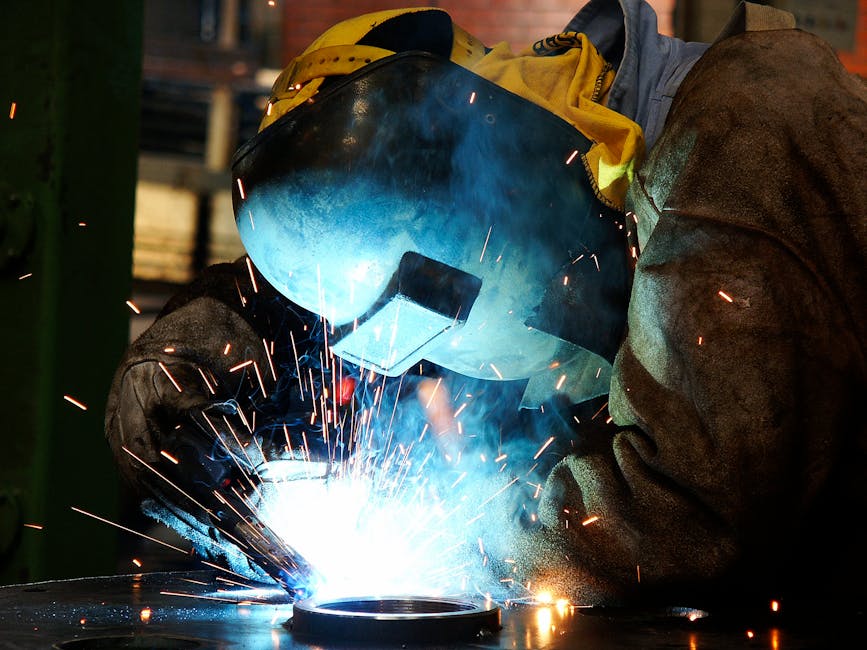The Impact of Welding Fabrication on Structural Integrity in Engineering Projects
The impact of welding fabrication on structural integrity in engineering projects is a critical aspect that demands careful consideration. Welding plays a pivotal role in the construction of various engineering structures, and the quality of welding fabrication directly influences the structural integrity and overall safety of these projects.
Understanding the factors affecting structural integrity, employing appropriate welding techniques, and implementing stringent inspection and quality control measures are essential for ensuring the durability and reliability of the final product.
Through comprehensive case studies and lessons learnt, it becomes evident that the application of best practises in welding fabrication is indispensable in upholding the structural integrity of engineering projects.
Key Takeaways
- Welding fabrication quality directly affects the structural integrity and long-term performance of engineering projects.
- Material selection, welding defects, attention to detail, and resistance to environmental factors are crucial in ensuring structural integrity.
- Welding techniques, best practises, inspection, and quality control measures all contribute to the overall structural integrity of welded components.
- Case studies highlight the consequences of inadequate welding fabrication on the safety and reliability of engineering projects.
Importance of Welding Fabrication Quality

The importance of welding fabrication quality cannot be overstated in engineering projects, as it directly influences the structural integrity and long-term performance of the final product. Material selection is a crucial aspect of welding fabrication, as different materials require specific welding techniques to ensure a strong and durable bond. Welding defects such as porosity, lack of fusion, and cracks can compromise the structural integrity of the welded components, leading to potential failure under load. Therefore, meticulous attention to detail during the welding fabrication process is essential to prevent these defects and ensure the overall quality of the welded structure.
Furthermore, the expertise of welders and the use of appropriate welding techniques are paramount in achieving high-quality welds. Welding fabrication quality also plays a significant role in determining the resistance of the structure to environmental factors such as corrosion and fatigue.
Factors Affecting Structural Integrity

Factors affecting structural integrity in welding fabrication include material selection, welding technique, and environmental exposure.
The material properties of the base metal and filler material significantly influence the strength and durability of the welded joint. Factors such as tensile strength, ductility, and corrosion resistance must be carefully considered during material selection to ensure compatibility and long-term performance.
Additionally, welding technique plays a crucial role in determining the structural integrity of fabricated components. Proper welding parameters, joint design, and pre- and post-weld heat treatments can all impact the final structural integrity of the weld.
Moreover, environmental conditions, such as temperature variations, humidity, and exposure to corrosive substances, can degrade the structural integrity of welded structures over time. Understanding how these environmental factors affect the material properties and the welded joint is essential for ensuring long-term structural integrity.
Transitioning into the subsequent section about ‘welding techniques and best practises’, it is imperative to implement appropriate welding techniques and best practises to mitigate the impact of these factors and maximise structural integrity.
Welding Techniques and Best Practises

Implementing precise welding techniques and best practises is crucial for ensuring the structural integrity of fabricated components in engineering projects. The welding process efficiency and the compatibility of welding materials are key factors that significantly impact the quality and durability of welded structures. Below is a table summarising some essential welding techniques and best practises:
| Welding Technique | Best Practise | Benefits |
|---|---|---|
| Tungsten Inert Gas (TIG) Welding | Maintain proper gas flow and shielding | High-quality, precise welds |
| Metal Inert Gas (MIG) Welding | Use the correct wire type and diameter | High deposition rates, less clean-up |
| Shielded Metal Arc Welding (SMAW) | Ensure proper electrode storage | Versatile, works well with thick materials |
Adhering to these best practises enhances the overall efficiency of the welding process and ensures the compatibility of welding materials, resulting in structurally sound and reliable fabricated components. By employing these techniques, engineers can effectively contribute to the overall success and safety of engineering projects.
Inspection and Quality Control Measures

To ensure the structural integrity of welded components in engineering projects, thorough inspection and rigorous quality control measures are imperative. This involves the implementation of visual inspection and non-destructive testing (NDT) techniques to detect any defects or inconsistencies in the welded joints.
-
Visual Inspection:Visual inspection is a fundamental and cost-effective method for evaluating weld quality. It involves the use of visual aids such as magnifying glasses, mirrors, and cameras to examine the weld for surface irregularities, cracks, or lack of fusion. The inspector must be adequately trained to identify potential issues, and the inspection should be carried out under suitable lighting conditions to ensure accurate assessments.
-
Non-Destructive Testing (NDT):NDT techniques, such as ultrasonic testing, radiography, and magnetic particle testing, are essential for detecting internal flaws without causing damage to the welded components. These methods provide detailed insights into the integrity of the welds, helping to identify defects such as porosity, inclusions, and cracks that may compromise the structural performance.
Transitioning into the subsequent section about ‘case studies and lessons learnt’, it is crucial to understand how these inspection and quality control measures have impacted real-world engineering projects.
Case Studies and Lessons Learnt

Transitioning from the implementation of inspection and quality control measures, the impact of these protocols on real-world engineering projects becomes evident through case studies and lessons learnt. Real-world examples provide practical takeaways that highlight the significance of meticulous welding fabrication in ensuring structural integrity. The following case studies underscore the crucial role of welding fabrication in engineering projects:
| Case Study | Lesson Learnt |
|---|---|
| Bridge Construction | Inadequate welding led to structural failure, emphasising the need for thorough quality control and inspection during welding fabrication. |
| Pressure Vessel Failure | Improper welding techniques resulted in a pressure vessel failure, emphasising the importance of adhering to welding standards and procedures. |
| Offshore Platform Incident | Welding defects caused a catastrophic incident, emphasising the necessity of competent welders and continuous quality assurance. |
| High-rise Building Collapse | Substandard welding compromised the building’s integrity, highlighting the essential role of quality welding in ensuring safety and reliability. |
These real-world examples serve as practical takeaways, illustrating the direct correlation between welding fabrication and the structural integrity of engineering projects. By learning from these cases, engineers and stakeholders can better appreciate the criticality of welding quality and the implications of overlooking proper welding fabrication practises.
Frequently Asked Questions
What Are the Potential Legal Implications for a Project if Welding Fabrication Quality Is Compromised?
Compromised welding fabrication quality can lead to potential legal implications for a project, including safety hazards, structural failures, and financial liabilities. It is crucial to ensure adherence to industry standards to mitigate such consequences.
How Does Environmental Exposure Affect the Structural Integrity of Welded Components Over Time?
Environmental degradation can significantly impact the structural integrity of welded components over time. Factors such as corrosion, UV exposure, and temperature fluctuations can weaken materials. Careful material selection and protective coatings are crucial in mitigating these effects.
Are There Any Emerging Welding Techniques or Technologies That Could Significantly Improve Structural Integrity in Engineering Projects?
Emerging techniques and advanced technologies in welding, such as friction stir welding and laser beam welding, show promise in significantly improving structural integrity in engineering projects. These methods offer enhanced precision, reduced distortion, and improved material properties.
What Are the Key Differences in Inspection and Quality Control Measures Between Different Types of Welding Processes (E.G. MIG Vs TIG Welding)?
In examining key differences in inspection and quality control measures between welding processes, it’s critical to note that while MIG welding offers speed and versatility, TIG welding provides superior precision and aesthetic appeal, impacting structural integrity and project outcomes significantly.
Can You Provide Examples of Specific Engineering Projects Where Welding Fabrication Quality Directly Impacted the Structural Integrity and Overall Success of the Project?
Welding standards and regulations play a critical role in construction safety. Project failures due to poor welding fabrication quality can directly impact structural integrity. For instance, in bridge construction, inadequate weld quality can lead to catastrophic structural failure.
Conclusion
In conclusion, the quality of welding fabrication plays a critical role in ensuring the structural integrity of engineering projects.
Like the strength of a chain, the welding techniques and inspection measures must be carefully considered to prevent weak links in the structure.
By understanding the factors that affect structural integrity and implementing best practises, engineers can mitigate the risk of failure and ensure the safety and longevity of their projects.
Contact us to discuss our services now!
